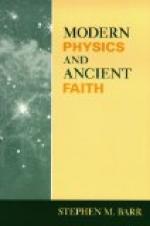Thirty years ago Proctor made it clear to Western students that the orbit of the moon was a cycloidal curve (a drawn-out spring) around the sun, the earth’s orbit being coincident with its axis; and that the moon was, astronomically and correctly, a satellite of the sun, not a satellite of the earth. This has been the Eastern view and teaching from time immemorial.
The Eastern distinction between father Sun and mother Moon, and the classification of the latter as a planet, did not disturb the Western student. He understood that. It was the “absolute accuracy” of modern astronomers in regard to the length of the day on Mercury or Venus, which the astronomers declared had been corrected down to the fraction of a second, that made it impossible for him to accept the Eastern physics when the latter squarely contradicted his own.
This was but the first of many similar stumbling-blocks in the path of the student of Eastern physics.
“Few were the
followers, straggling far,
That reached the lake
of Vennachar;”
and when they did, this was what they had to face:
“The planets absorb and use nearly all the solar energy—all except the very small amount the minor specks of cosmic dust may receive. There is not the least particle of the sun’s light, or heat, or any one of the seven conditions of the solar energy, wasted. Except for the planets, it is not manifested; it is not. There is no light, no heat, no form of solar energy, except on the planets as it is transferred from the laya center of each in the sun to them. The etheric globe is cold and dark, except along the lines to them—the “Paths of Fohat” [solar energy]. Six laya centers are manifested in the sun; one is laid aside, though the wheels [planets] around the One Eye be seven. [This alludes to the moon, whose laya center in the sun is now also that of the earth; but it is considered as a planet]. What each receives, that it also gives back. There is nothing lost.”
“That settles it,” says one student; and the others agree. Of the hundred who started,
“The foremost horseman rode alone,”
before the next step was won.
In the light of the tardy but perfect justification of the first stumbling-block, this statement may be worth following out, “to see what it means,” and how “absurd” it can be. An etheric globe; cold as absolute zero, dark as Erebus, with here and there small pencils of light and heat from the sun to the planets —just rays, and nothing more—is a very different one from the fiery furnace at absolute zero of the modern physicist.
On a line drawn from the center of the earth to the center of the moon there is a point where the “weights” of the two bodies are said in our physics exactly to balance, and it lies, says our physics, “2,900 miles from the center of the earth, and 1,100 miles from the surface.” This is the earth’s “laya center” of the Eastern physics. It is of great importance in problems of life; but it may be passed over for the present.




